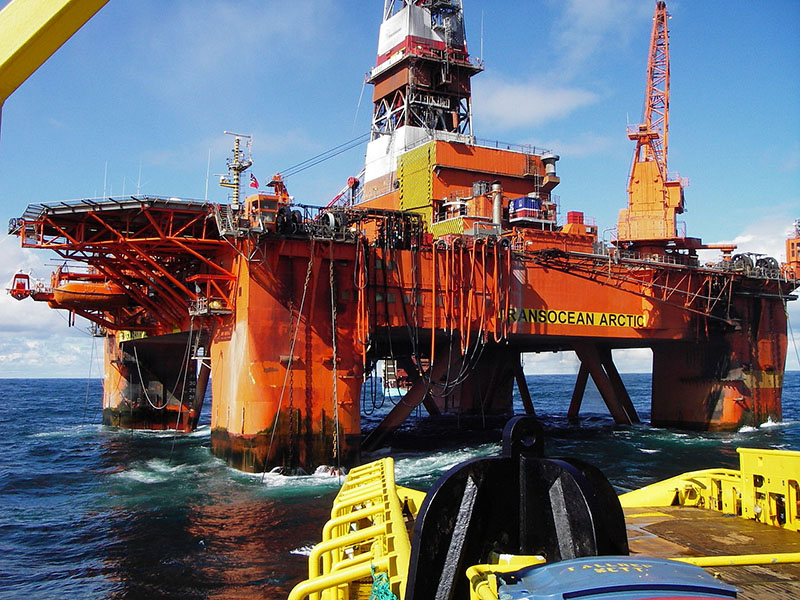(Bloomberg) — Offshore oil rig operators, grappling with the biggest industry downturn in a generation, say they finally have the bottom in sight. The problem is, they could be stuck there for a long time.
Transocean Ltd., which owns the biggest offshore-rig fleet in the world, believes utilization for floating units will reach bottom toward the middle of next year, Chief Financial Officer Mark Mey said at a conference organized by Pareto Securities ASA in Oslo. Seadrill Ltd., which owns the third-largest fleet, said utilization could stabilize as soon as the beginning of next year, and that rental rates had already bottomed out.
Still, it’s impossible to say when those rates, which have dropped to about $200,000 a day from highs of $650,000 in 2013 for the most sophisticated units, will recover, said Seadrill Chief Executive Officer Per Wullf and Tom Kellock, a senior consultant at IHS Markit Ltd.
“We don’t know where demand is going, and that’s a reflection of the oil price,” Kellock said in an interview. “Rates are going to come back more slowly than oil prices because of the overhang and the degree of competition and the oversupply of rigs, which is not at this stage being tackled.”
Offshore drillers have been pounded by the collapse in crude prices in the past two years as oil companies slashed spending to protect their cash flow and shareholder payouts. Their predicament has been exacerbated by a wave of new rigs coming into the market that were ordered when demand was strong. Rig operators have reduced costs dramatically, but still have had to cut dividends, defer delivery of vessels and suspend or scrap existing ones.
Bottoming Out
The number of floating rigs on contract and working is expected to fall to about 120 in the middle of 2017 from about 160 currently, Transocean’s Mey said in an interview on the sidelines of the conference. It could take as long as a year before utilization bottoms out, IHS Markit’s Kellock said. As many as 60 more floaters need to be permanently scrapped, according to both Seadrill and IHS Markit.
While Seadrill said utilization rates will need to reach 70% across the industry before rates start improving, Transocean and IHS Markit estimated 85%. Regardless, a recovery depends on higher, more stable oil prices, Ensco Plc Chief Financial Officer Jon Baksht, said during a presentation at the conference Wednesday.
“You’ll have flat utilization” from the beginning of next year with operators “hunting” for work, Wullf said in an interview. “Then it’s a matter of the oil price.”
Longer Glut
While oil has recovered from the 12-year lows it reached in January, the International Energy Agency said this week that a global glut will last longer than previously expected, persisting into late 2017 as demand growth slows and supply keeps up, driven by record output from OPEC.
For costly ultra-deepwater rigs, utilization rates of 70% won’t be reached until 2018 at the earliest, said Andrew Cosgrove, an analyst at Bloomberg Intelligence. “I agree rates are definitely at or near bottom, but we’re going to be walking along the ‘bottom of the bathtub’ for a while.”
An extended period at the bottom looks especially threatening for Seadrill, which has the industry’s heaviest debt load, with about $9 billion at the end of the second quarter. The company, controlled by billionaire John Fredriksen, is currently negotiating with its 42 banks before it can be able to include bondholders, Wullf said at the conference. The company aims to have a solution in place by early December, he said.
“It’s a big puzzle,” Wullf said. “I’m carefully optimistic.”
Bloomberg News by Mikael Holter





